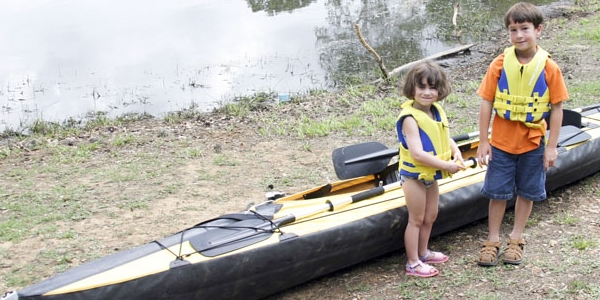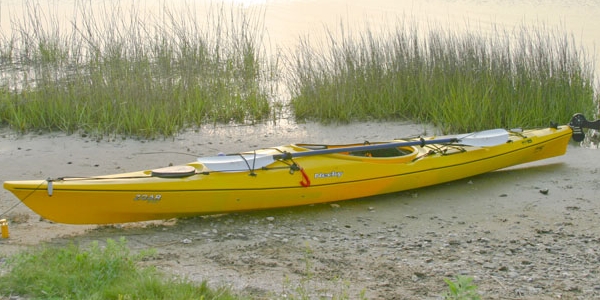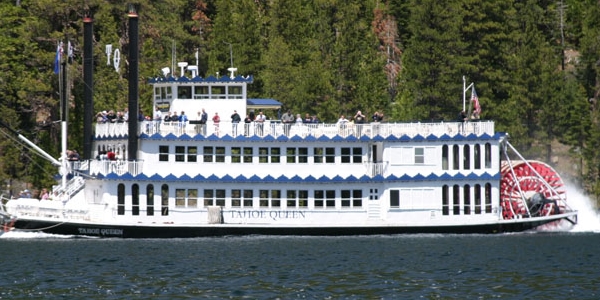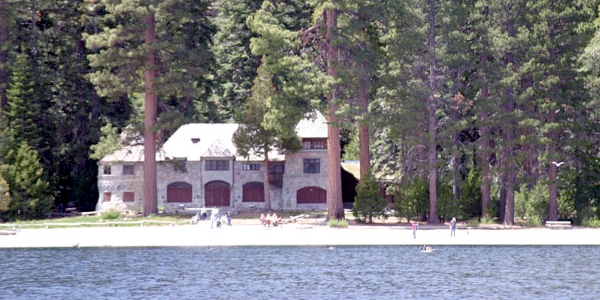Welcome to the Atlantic ICW Kayak Expedition
Keeping insects, snakes, alligators, raccoons and other pests away
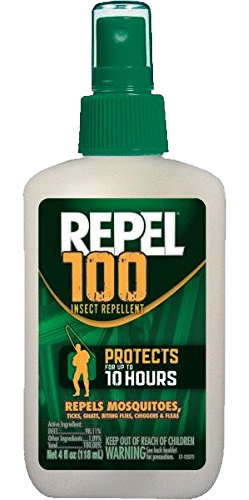 ⇐ This is 98.11%
DEET and will dissolve plastic. 98% DEET can be used to remove the yellow from car headlights. After you have applied it, wash your hands thoroughly as even a trace will leave a fingerprint on any plastic you touch.
DEET is the main active ingredient in commercial insect repellents products such as OFF,
Cutter, and
Sawyer range.
⇐ This is 98.11%
DEET and will dissolve plastic. 98% DEET can be used to remove the yellow from car headlights. After you have applied it, wash your hands thoroughly as even a trace will leave a fingerprint on any plastic you touch.
DEET is the main active ingredient in commercial insect repellents products such as OFF,
Cutter, and
Sawyer range.
Noseeums
If you plan on walking anywhere on Matagorda Island, you need to be ready for these painful insects.
Also known as "sand fleas,"
no-see-ums can make a morning or late
afternoon at the beach unbearable—especially in the summer and
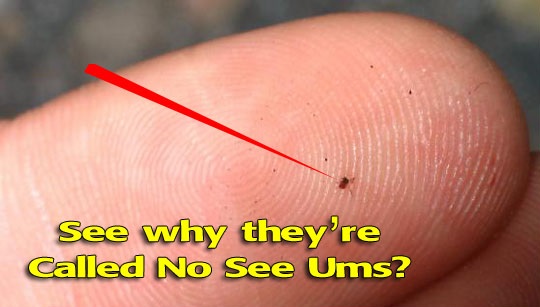 early fall. They are nearly invisible and their bite or sting really
isn't a bite or sting—it is the sensation you feel when the acid in their bodily fluid hits the skin.
Sand fleas are actually a gnat (Culicoides furens) that are sensitive to temperature and humidity.
No-see-um's Scottish cousin, the midge, or even the horsefly, will feel like a love-bite compared to them.
They will have you hopping, swerving, and jumping until you get out of their range.
early fall. They are nearly invisible and their bite or sting really
isn't a bite or sting—it is the sensation you feel when the acid in their bodily fluid hits the skin.
Sand fleas are actually a gnat (Culicoides furens) that are sensitive to temperature and humidity.
No-see-um's Scottish cousin, the midge, or even the horsefly, will feel like a love-bite compared to them.
They will have you hopping, swerving, and jumping until you get out of their range.
This is an
insecticide and repellent of odorless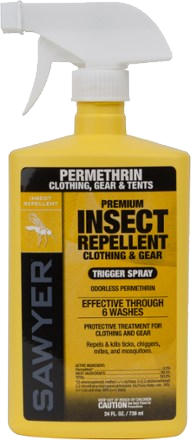 Permethrin which is applied directly to clothing, gear, and tents. Clothing needs a reapplication after approximately six washes. The U.S. Military has been using permethrin to treat combat uniforms for over 20 years to protect soldiers from diseases carried by insects. Permethrin is the only pesticide approved by the EPA for these uses. ⇒
Permethrin which is applied directly to clothing, gear, and tents. Clothing needs a reapplication after approximately six washes. The U.S. Military has been using permethrin to treat combat uniforms for over 20 years to protect soldiers from diseases carried by insects. Permethrin is the only pesticide approved by the EPA for these uses. ⇒
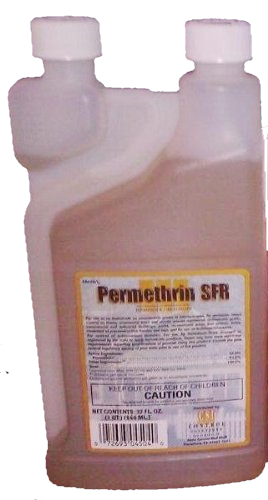 ⇐ You might want to make up your own solution by buying bulk
Permethrin SFR (36.8%) and diluting it down to 0.5% (74:1).
⇐ You might want to make up your own solution by buying bulk
Permethrin SFR (36.8%) and diluting it down to 0.5% (74:1).
Permethrin has been at the forefront for mosquito control for years but is now becoming less effective as the latest generations of
Aedes aegypti (Linnaeus) are
showing Permethrin resistance. Unfortunately, the consequences are dire as this is the mosquito carrying
Dengue (DFV), Chikungunya (CFV), Yellow Fever (YFV), and the Zika (ZFV) virus. However, its effectiveness at controlling other mosquitoes and pests makes it invaluable.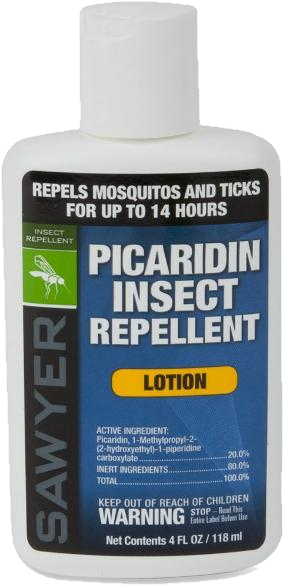
Recently, I have been testing 20% picaridin based repellents which have several advantages and appear to be as effective as DEET-based products. Its big advantages are that it is odorless, colorless, and is effective for up to 14 hours. Picaridin repels insects, ticks and chiggers and, if you are in Scotland, the dreaded wee beasties known as midges. Picaridin seems to be better at repelling other biting insects, notably no-see-ums. It is a synthetic compound first made in the 1980s. It was made to resemble the natural compound piperine, which is found in the group of plants that are used to produce black pepper.
Snakes, spiders, raccoons and alligators
 If you are in a wooded area with sufficiently dense trees, then a suspended tent or hammock may be a solution for you.
If you are in a wooded area with sufficiently dense trees, then a suspended tent or hammock may be a solution for you.
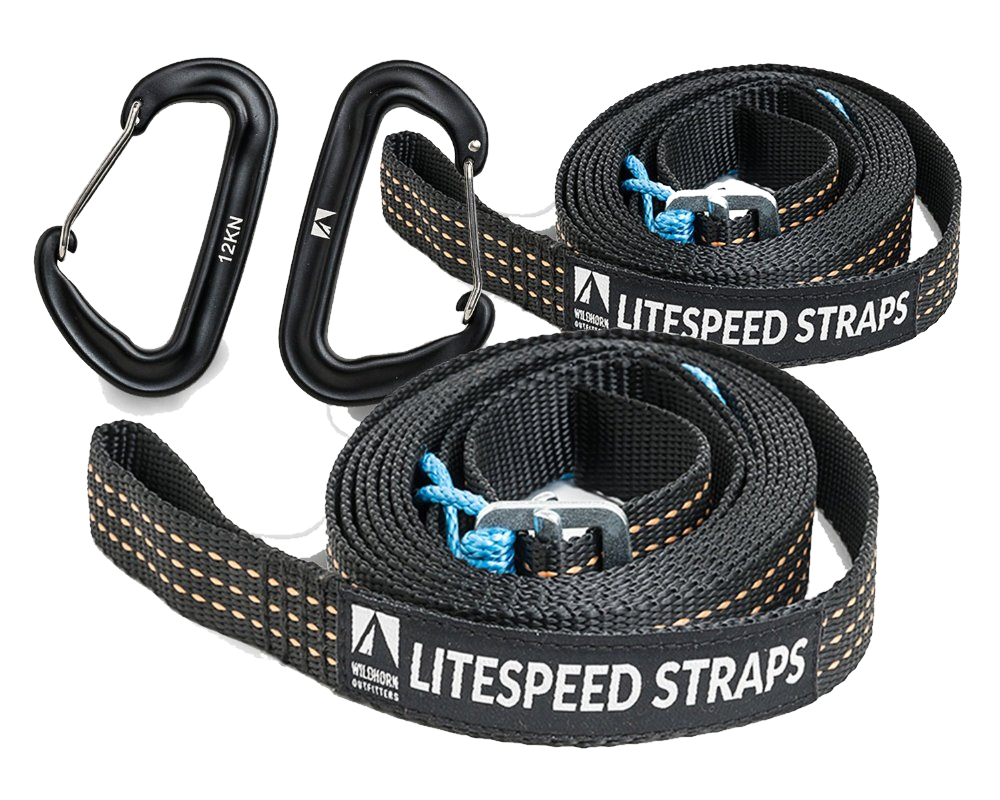 Make sure you have tree straps that match the weight you are going
to put in the hammock such as these LiteSpeed Hammock Tree Straps.
Don't forget to spray everything with Permethrin.
Make sure you have tree straps that match the weight you are going
to put in the hammock such as these LiteSpeed Hammock Tree Straps.
Don't forget to spray everything with Permethrin.
Raccoons
 Raccoons are very intelligent, resourceful and tenacious
nocturnal pests. The least they will do is disturb your sleep at night. If there is any food that they can smell, they will go to great
lengths to get to it. They can open ice chests, they will rip trash bags with their sharp claws (they will reach on their hind legs so
trash has to be high) and that includes you if you are in a suspended tent or hammock, and they hang about in gangs (called a nursery) and
will intimidate you with their hisses.
Raccoons are very intelligent, resourceful and tenacious
nocturnal pests. The least they will do is disturb your sleep at night. If there is any food that they can smell, they will go to great
lengths to get to it. They can open ice chests, they will rip trash bags with their sharp claws (they will reach on their hind legs so
trash has to be high) and that includes you if you are in a suspended tent or hammock, and they hang about in gangs (called a nursery) and
will intimidate you with their hisses.
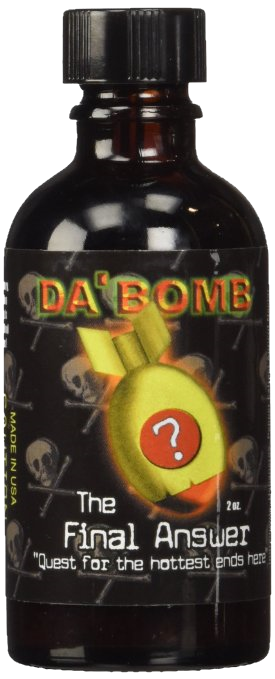 Pepper-based liquids ⇒ and granules can be effective (or make your own spray by diluting liquid pepper such as
Da’Bomb—The Final Answer ⇐ which has 1,500,000 Scoville Heat Units [SHU]). Be careful! Pepper sprays are likely to be just as harmful to you.
Pepper-based liquids ⇒ and granules can be effective (or make your own spray by diluting liquid pepper such as
Da’Bomb—The Final Answer ⇐ which has 1,500,000 Scoville Heat Units [SHU]). Be careful! Pepper sprays are likely to be just as harmful to you.
Alligators
Alligators will usually be in the edges of water where they can hide in the reeds or head for deeper water. While they are fresh-water creatures, they have occasionally been spotted in the briny water of the Intracoastal Waterway and even in the Atlantic Ocean.
